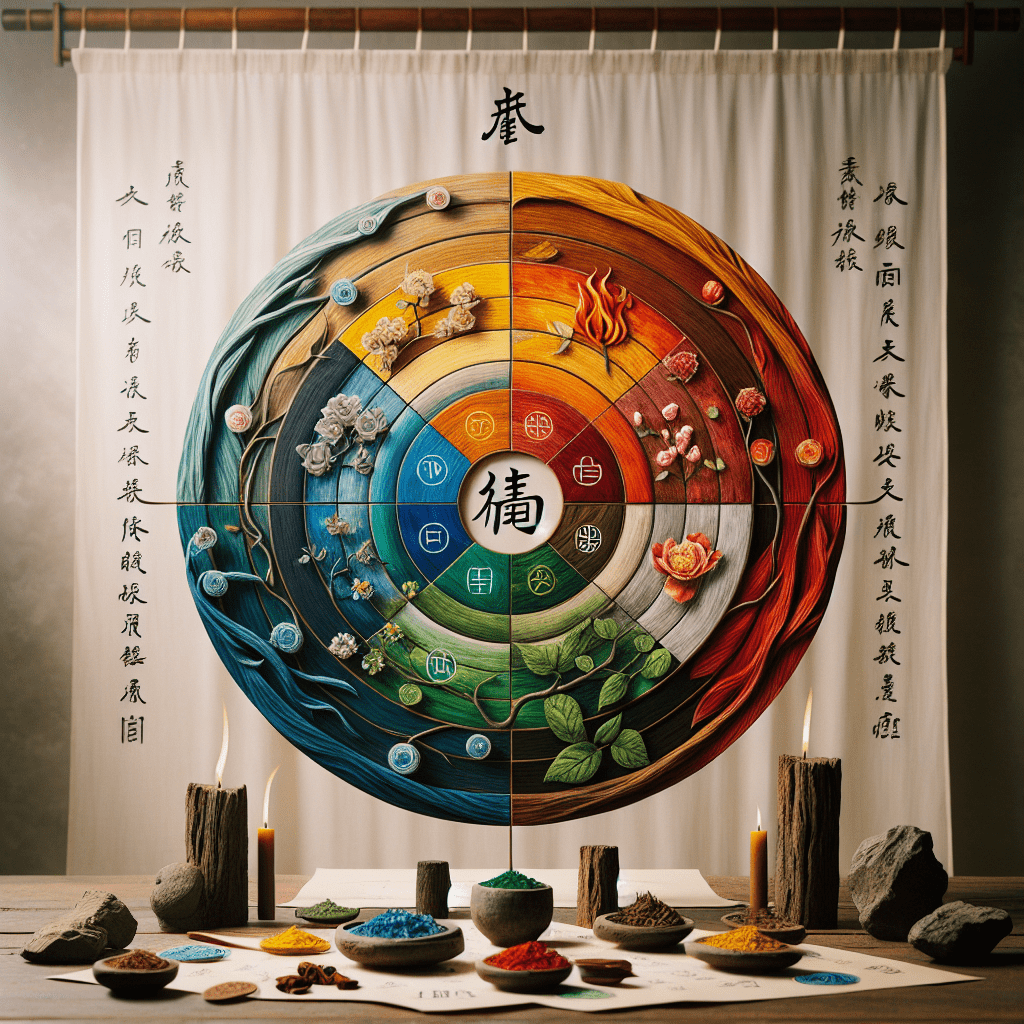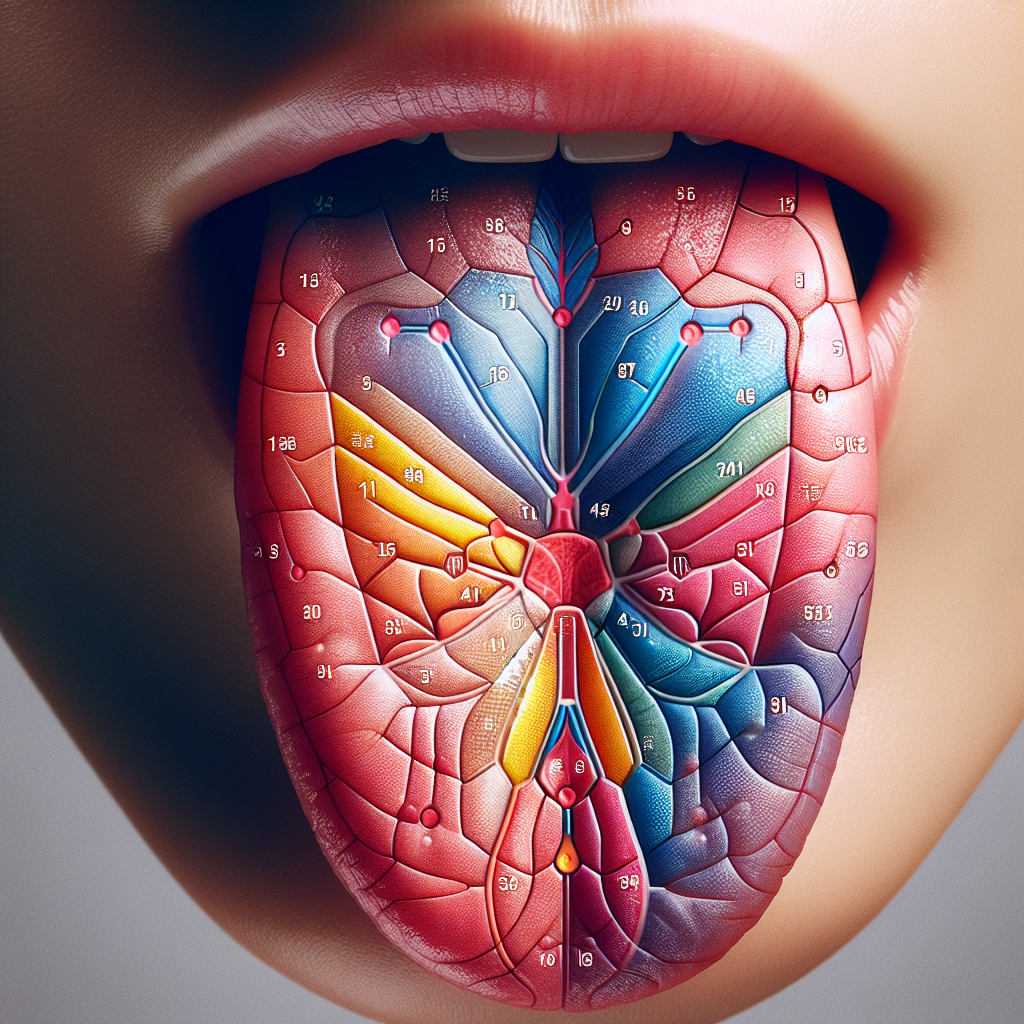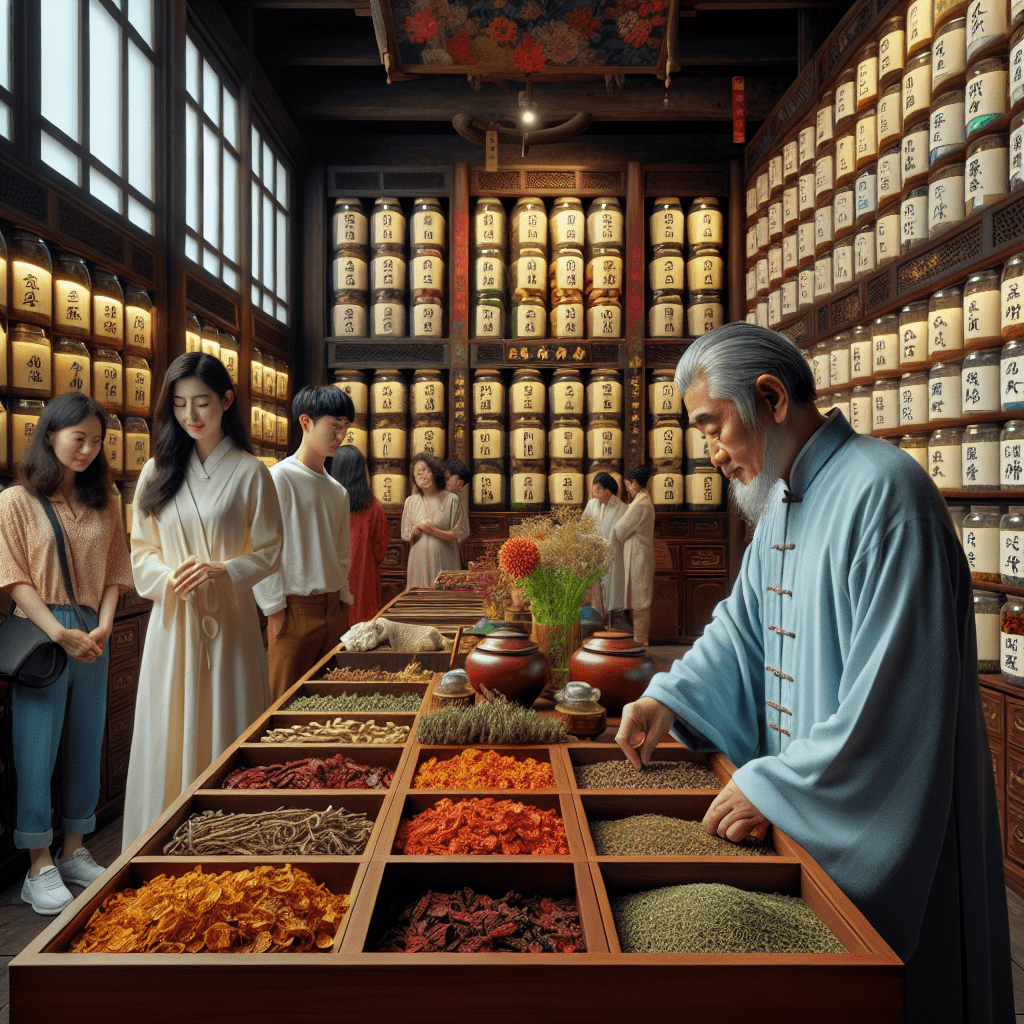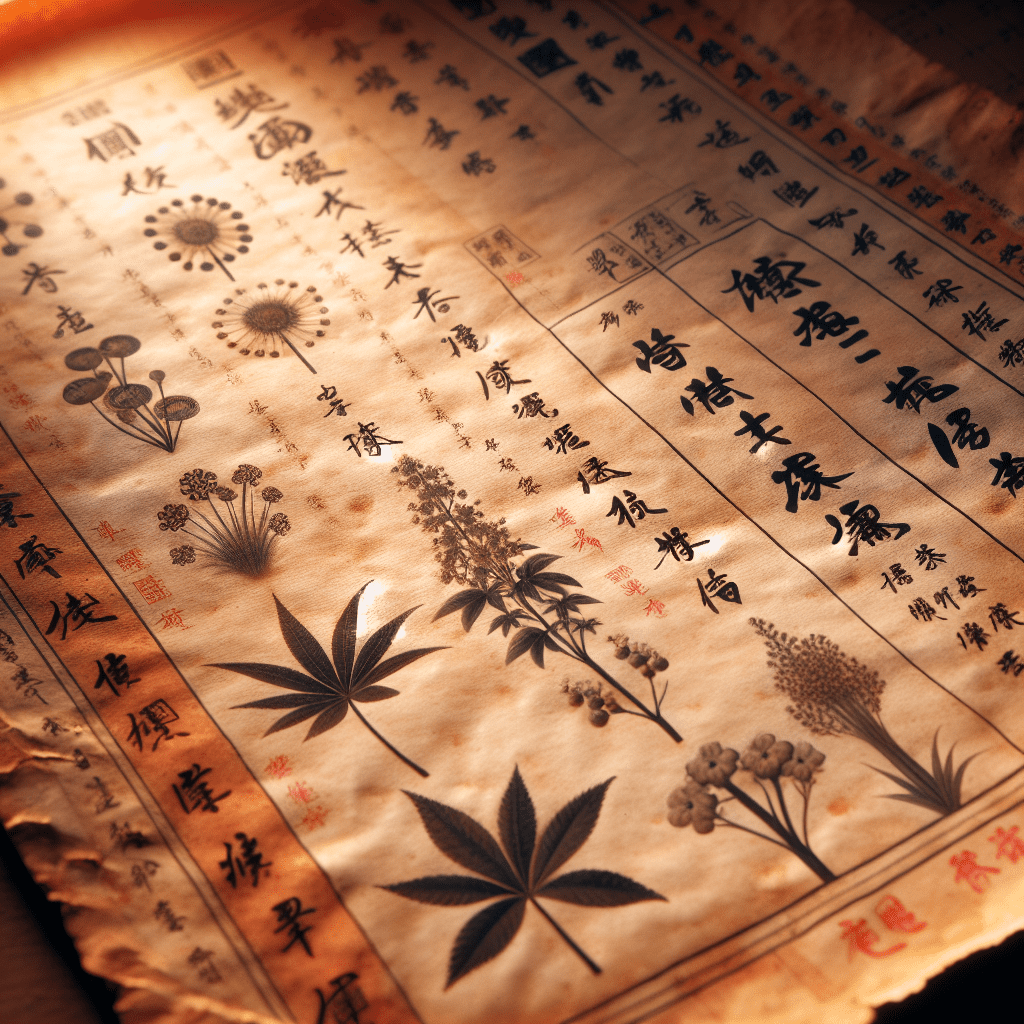In a world where wellness trends come and go, Traditional Chinese Medicine (TCM) stands apart—not as a passing fad, but as a 2,000-year-old healing system that’s finding remarkable relevance in our modern lives. As more health-conscious individuals seek alternatives to conventional approaches, this ancient practice is experiencing a renaissance in Western wellness circles.
What makes Traditional Chinese Medicine so compelling today? Perhaps it’s the way it views health holistically, seeing the human body not as separate systems but as an interconnected whole. Or maybe it’s how TCM offers natural solutions for common ailments without the side effects often associated with pharmaceutical interventions. Whatever the reason, there’s no denying that this ancient wisdom is transforming how many of us think about health and healing.
The beauty of Traditional Chinese Medicine lies in its fundamental understanding that wellness isn’t just about treating symptoms—it’s about restoring balance to the entire being. As our modern lifestyles grow increasingly hectic and disconnected from nature, TCM’s emphasis on harmony and natural healing offers a refreshing alternative that resonates with those seeking deeper, more sustainable approaches to health.
The Timeless Principles of Traditional Chinese Medicine
Traditional Chinese Medicine’s enduring principles have withstood the test of time, offering insights that complement our modern understanding of health and wellness.
At its core, Traditional Chinese Medicine is built upon principles that have remained consistent for thousands of years. These foundational concepts may sound mystical to Western ears, but they represent sophisticated observations about human health that continue to prove their value today.
The first principle you’ll encounter in TCM is the concept of Yin and Yang—perhaps the most recognizable symbol in Eastern philosophy. “Yin and Yang represent opposite forces that need to be balanced,” explains Dr. Sarah Chen, a TCM practitioner with over 20 years of experience. “Yin embodies coolness, darkness, and receptivity, while Yang represents heat, brightness, and activity. When these forces are in harmony, health flourishes.“
This balance isn’t static but dynamic—constantly shifting as we move through our days and seasons. Think about how your energy naturally rises in the morning (Yang) and settles in the evening (Yin). Traditional Chinese Medicine recognizes these natural rhythms and works to support them rather than fight against them.
Another fundamental concept is Qi (pronounced “chee”), often described as the vital life energy that flows through specific pathways called meridians in the body. “In TCM, we believe that health exists when Qi is flowing freely and in sufficient quantity,” says Chen. “When Qi becomes blocked or deficient, illness can take root.”
The Five Elements Theory further expands TCM’s framework, categorizing all phenomena into five groups: Wood, Fire, Earth, Metal, and Water. Each element corresponds to specific organs, emotions, seasons, and even flavors. This intricate system helps practitioners understand the relationships between different aspects of health and identify patterns of imbalance.
These principles might seem abstract at first, but they provide a sophisticated map for understanding health in ways that sometimes elude Western medicine. While conventional healthcare excels at treating acute conditions, Traditional Chinese Medicine offers insights into subtle imbalances before they manifest as disease—making it an invaluable complement to modern wellness approaches.
The Art of Diagnosis: Reading Your Body’s Signals
One of the most fascinating aspects of Traditional Chinese Medicine is its unique diagnostic methods. Unlike Western medicine’s reliance on lab tests and imaging, TCM practitioners use sensory observations to build a comprehensive picture of your health.
“In Traditional Chinese Medicine, we don’t just want to know your symptoms—we want to understand your entire constitution,” explains Dr. Liu Wei, a third-generation TCM practitioner. “This requires observation methods that have been refined over thousands of years.”
The most distinctive diagnostic technique in TCM is tongue observation. Your tongue serves as a map of your internal health, with different areas corresponding to specific organs. A TCM practitioner will note the color, coating, shape, and moisture of your tongue, gathering valuable information about your digestive system, circulation, and overall vitality.
“The tongue never lies,” Dr. Wei often tells his patients. “It provides a window into your body’s internal environment that can reveal imbalances before they manifest as symptoms.”
Equally important is pulse diagnosis, where practitioners assess not just the rate but the quality of your pulse at three different positions on each wrist, each corresponding to different organs. Through this delicate palpation, they can detect subtle imbalances in Qi flow and organ function.
Other diagnostic methods include observing your complexion, listening to the quality of your voice, noting body odors, and asking detailed questions about your lifestyle, emotions, and health history. Together, these approaches create a personalized assessment that guides treatment.
What makes these diagnostic methods particularly valuable today is their ability to detect subtle imbalances that might not register on conventional medical tests. Many patients seek out Traditional Chinese Medicine after being told their lab results are “normal” despite feeling unwell. TCM’s personalized approach often uncovers patterns of disharmony that explain these persistent but elusive symptoms.
Healing Modalities: Ancient Techniques for Modern Ailments
From acupuncture to herbal formulas, TCM offers a diverse range of healing techniques that address both symptoms and their underlying causes.
Traditional Chinese Medicine offers a diverse toolbox of healing modalities, each designed to restore balance in specific ways. These time-tested techniques address not just physical symptoms but the underlying patterns of disharmony.
Acupuncture, perhaps the most recognized TCM practice in the West, involves the strategic placement of thin needles at specific points along the body’s meridians. These acupoints act as access points to influence the flow of Qi. “Many people are surprised by how relaxing acupuncture feels,” says Jennifer Wong, a licensed acupuncturist. “The needles are extremely thin—nothing like getting a shot—and many patients drift into a peaceful sleep during treatment.”
Research increasingly supports acupuncture’s effectiveness for pain management, stress reduction, and even digestive disorders. A 2018 study published in the Journal of Pain found that acupuncture provided significant relief for chronic pain conditions, with effects lasting months after treatment ended. Multiple studies from the National Institutes of Health have confirmed these benefits with fewer side effects than pharmaceutical interventions.
Chinese herbal medicine offers another powerful approach, using complex formulas tailored to individual needs. Unlike Western pharmaceutical approaches that often isolate single compounds, Traditional Chinese Medicine typically combines 4-12 herbs that work synergistically. “These formulas aren’t random combinations,” explains herbalist Grace Chen. “They’re carefully balanced to maximize therapeutic effects while minimizing side effects.”
Common herbs like ginseng for energy, goji berries for immune support, and licorice root for digestive health have found their way into mainstream wellness products. However, the real power of Chinese herbal medicine lies in personalized formulations prescribed by qualified practitioners.
Movement practices form the third pillar of TCM therapy. Qigong and Tai Chi integrate gentle movement, breath control, and meditation to cultivate and balance Qi. “These aren’t just exercises—they’re moving meditations that teach your body how to maintain its own balance,” says Tai Chi instructor Michael Chang. “Regular practice helps prevent health issues before they start.”
For Linda Jameson, a 45-year-old marketing executive, these TCM modalities provided relief when conventional treatments failed. “I’d been dealing with chronic migraines for years, trying everything from prescription medications to elimination diets,” she shares. “After three months of weekly acupuncture sessions and a customized herbal formula, my migraines decreased from 3-4 per month to maybe one every few months. It changed my life.“
Common Conditions: TCM’s Versatile Approach to Health Challenges
Traditional Chinese Medicine addresses an impressive range of health concerns, often providing relief where other approaches have fallen short. Its holistic nature makes it particularly effective for complex, chronic conditions that don’t respond well to conventional treatments.
Stress and anxiety respond remarkably well to TCM interventions. “In Traditional Chinese Medicine, we see anxiety as a disruption in the harmony between the Heart (which houses the spirit) and the Kidneys (which store our foundational energy),” explains Dr. Sarah Chen. Acupuncture, specific herbal formulas like Xiao Yao San (Free and Easy Wanderer), and qigong exercises help restore this balance, often providing relief without the side effects associated with anti-anxiety medications.
Chronic pain conditions—including back pain, arthritis, and fibromyalgia—are among the most common reasons people seek TCM treatment. “We look beyond the pain location to identify the underlying patterns of disharmony,” says acupuncturist David Lin. “Is there stagnation of Qi? Blood deficiency? Once we understand the pattern, we can address both the symptoms and their root cause.”
Digestive disorders represent another area where Traditional Chinese Medicine excels. From IBS to acid reflux, TCM offers targeted approaches based on specific patterns of digestive imbalance. Herbs like ginger, poria, and atractylodes regulate digestion, while acupuncture helps normalize gut function. “The digestive system is foundational to overall health in TCM,” explains herbalist Wei Zhang. “When digestion improves, we often see benefits throughout the body.”
Women’s health concerns, including menstrual irregularities, fertility challenges, and menopausal symptoms, respond particularly well to TCM approaches. “These conditions often involve complex hormonal interactions that are difficult to address with conventional treatments,” says reproductive specialist Dr. Mei Ling. “TCM’s holistic approach helps regulate these delicate systems naturally.”
For James Wilson, a 52-year-old construction manager, Traditional Chinese Medicine provided relief from chronic insomnia when nothing else worked. “I’d tried everything—sleeping pills, meditation apps, even a $3,000 mattress,” he recalls. “My TCM doctor identified a pattern of ‘Heart and Kidney disharmony’ and prescribed acupuncture twice weekly with an herbal formula. Within three weeks, I was sleeping through the night for the first time in years.“
East Meets West: The Power of Integrative Medicine
The future of healthcare lies in integrating the best of Eastern and Western medical traditions, creating truly comprehensive approaches to wellness.
One of the most exciting developments in healthcare today is the growing integration of Traditional Chinese Medicine with Western medical approaches. This complementary relationship offers patients the best of both worlds—combining the precision and emergency care excellence of conventional medicine with TCM’s focus on prevention and holistic wellness.
“We’re moving beyond the either/or mentality,” says Dr. Robert Chen, who practices integrative medicine at a major university hospital. “The question isn’t whether to choose Western medicine or Traditional Chinese Medicine—it’s how to use both appropriately for optimal health outcomes.”
Many major medical centers now offer integrative care that includes acupuncture, particularly for pain management and cancer support. Memorial Sloan Kettering Cancer Center, for example, provides acupuncture to help manage chemotherapy side effects like nausea and peripheral neuropathy.
Research supports this integrative approach. A 2019 study published in JAMA Oncology found that cancer patients who received acupuncture alongside conventional treatment reported significantly better quality of life and reduced symptom burden compared to those receiving conventional care alone.
For chronic conditions like diabetes, combining approaches can yield impressive results. “Western medicine excels at managing blood sugar through medication and monitoring, while TCM offers complementary strategies to improve insulin sensitivity, reduce inflammation, and address complications,” explains endocrinologist Dr. Sarah Williams. “Together, they create a more comprehensive care plan.” This balanced approach reflects the core Yin-Yang philosophy that underlies Eastern healing traditions.
The adoption of evidence-based practices has been essential for integrating Traditional Chinese Medicine into global healthcare systems. As research continues to validate TCM approaches, more insurance companies are beginning to cover treatments like acupuncture, making these options accessible to more patients.
Finding Your Balance: TCM and Modern Wellness
The wisdom of Traditional Chinese Medicine aligns beautifully with our growing understanding that true health requires a holistic approach. Just as TCM teaches that balance is the foundation of wellness, at HerbalsZen, we’ve created EASTCHI AI to help you discover your unique path to harmony and vitality.
EASTCHI AI represents an innovative fusion of ancient wisdom and cutting-edge technology—bringing the personalized approach of Traditional Chinese Medicine into the digital age. By analyzing your constitutional type according to Five Element Theory, EASTCHI AI creates tailored nutrition plans and lifestyle recommendations that honor the wisdom of Eastern medicine while fitting seamlessly into your modern life.
“What makes Traditional Chinese Medicine so valuable today isn’t just its ancient techniques, but its fundamental philosophy that health requires harmony between all aspects of our being,” explains Dr. Ming Zhou, a TCM consultant for HerbalsZen. “EASTCHI AI embodies this philosophy by looking at your complete health picture—not just isolated symptoms.”
Like TCM practitioners who have carefully observed patterns of health and disease for millennia, EASTCHI AI learns from thousands of data points to provide increasingly refined recommendations. The system recognizes that what works for one person may not work for another—embracing the personalized approach that makes Traditional Chinese Medicine so effective.
Is your body out of balance? The answer might lie in ancient wisdom reimagined for modern life. Whether you’re dealing with specific health concerns or simply seeking to optimize your wellbeing, Traditional Chinese Medicine offers timeless principles that can guide your journey toward greater harmony and vitality.
As we navigate the complexities of modern living, perhaps the most revolutionary health insight is also the most ancient: true wellness comes from balance. By honoring the wisdom of Traditional Chinese Medicine while embracing the best of contemporary knowledge, we can create a more integrated, sustainable approach to health—one that treats not just symptoms, but the whole person.




